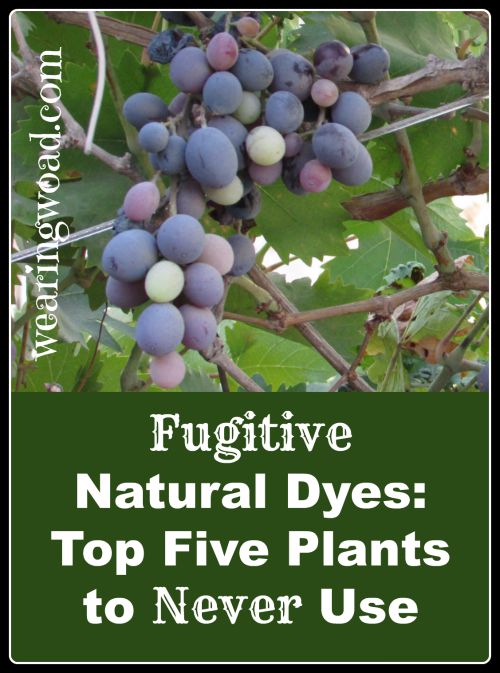Many people say that they never use natural dyes since they are fugitive and don’t last. Well, it depends entirely on what natural dyes you are using. Some natural dye plants advocated by people for beginning natural dyers are highly fugitive. Some fade rapidly without any sunlight, well others fade slowly over time. If you are going to all the work of extracting and dyeing with a natural dye, you want to make sure it is colourfast first.
This list is the most fugitive of the natural dyes, if you would like to know natural dyes that are colorfast, you can check out the top 7 colorfast natural dyes here.
Onion skins
These handy compost pail dyes are often the first natural dye used by beginning natural dyers. It is safe, nontoxic, and common. But, it is also highly fugitive, and will fade beautifully in sunlight. Unlike some dyes, including some chemical dyes, this is one natural dye which looks beautiful when faded. Onion fades from a beautiful clear, bright, yellow, to a soft, muted, fall yellow.
St. Johns Wort
This plant is not recommended for beginning natural dyers. It takes a lot of effort to harvest enough blossoms to dye with, though many regions are covered in fields of this beautiful herb. It gives beautiful red and burgundy colors, at first, but they rapidly fade to a blah beige. I would not recommend trying to knit a sweater out of St. Johns Wort dyed yarn, no matter how beautiful it looks. The colour will fade before you are done. It is an interesting dye to try for experimental purposes, but the colour is not fast for any sun-exposed project. .
Three other plants are recommended for children to use for natural dyes. These are Anthocyanin dyes which change colour based on pH level. They will change from a purple colour to a green -bluish shade when the pH changes.
Red Cabbage
This plant is recommended for use with young children. I saw one child do a science fair project on dying with Red Cabbage and Beets, one year. Red Cabbage is useful as food, and as a pH sensor, though it is not as accurate as pH test strips. Red cabbage colour will change on your fabric, depending on pH, and it also fades rapidly. This is not a good natural dye to use, although it is super fun to experiment with or use as a food-safe coloring on egg shells for Easter or something similar.
Beets
These are also recommended on many natural dye lists, with no warning that they are probably about the most fugitive of all natural dyes. A relative of mine had a natural dye sample book. She had kept it in the dark for between 10-15 years. When she looked at it, all the lichen and most of the natural dyes were still bright and clear. But, the sample dyed with beets was WHITE, with no colour whatsoever. Beet dye had fled even though it had not been exposed to any sunlight or washing since the day it was dyed. So, again, while fun to use on food stuffs or to add color to your cooking, this is not a good plant for dying fiber.
Blackberries and most other Berries and Fruits
These berries and others may stain your clothing, but like beets and red cabbage, they are not colourfast when you want them to be. If it is your favourite white T-shirt, you will never get the stain dots out, but if you are trying to colour fleece, it will fade like the ballistic beets. Other edible berries are the same, their colours are fugitive. Some non-edible berries do produce colourfast natural dye—like poke-berry. Edible berries can be used to add color to foods, but I do not recommend them for coloring fabric, yarn, or fleece.
To get the maximum satisfaction out of natural dying, I prefer using colourfast dyes. There are few things as depressing as dying a huge skein of yarn, with a hard-to-find natural dye, and then discovering that the colour fades rapidly in sunlight (which was my experience with Saint Johns’ Wort.) There are far more colourfast dyes out there than fugitive natural dyes. Take your time and find the colourfast dyes near you, and enjoy dying with them. When you experiment with local dyes be sure to keep a natural dye journal, with physical samples and pictures to see the fade rate.
Back To You:
Have you had an experience with fugitive natural dyes? I would love to hear your story. Leave a comment.
Can I add figs???? Figs mashed up etc dye cotton thread a wonderful light shade to go with white fabric – esp satin. I use it in crazy quilt blocks that aren’t going to be washed. But no hope of it lasting in the wash. Thanks for the list.
Thanks for your comment Wendy. Yes you can add figs to the list of fugitive natural dyes. Had not though of adding tropical plants to the list, thanks for the addition.
Sarah